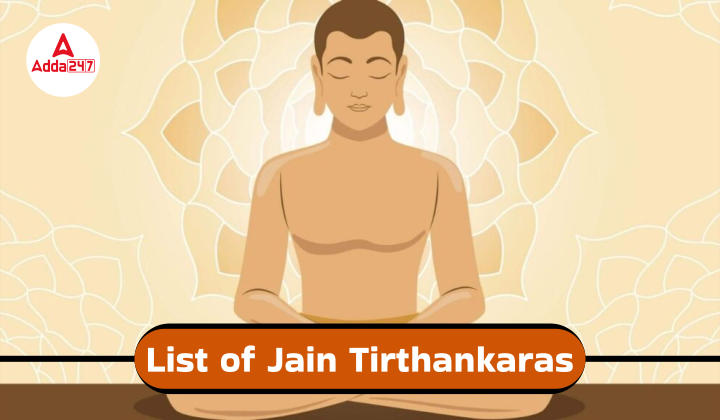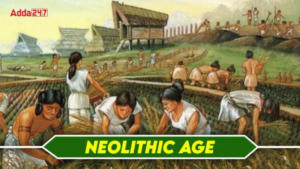Table of Contents
In Jainism, Tirthankaras are known as the Jina, signifying their mastery over all instincts. The tradition recognizes 24 Tirthankaras in total. The term “Tirthankara” originates from the fusion of “Teertha,” representing pilgrimage sites, and “Samsara,” denoting worldly existence. A Tirthankara has transcended the cycle of worldly life, comprehending the true essence of the self to achieve Kevala Jnana, or omniscience. For aspirants preparing for the IAS Exam in history, familiarity with the names and pertinent details of these 24 Tirthankaras is essential.
Definition of Tirthankaras
In Jainism, a Tirthankar is known as a “teaching god” or a “Ford Maker.” Key points of discussion regarding Tirthankaras include:
- People belief that every cosmic age has a rise of 24 Trirthankaras
- Artistic representations often depict Tirthankaras in the Kayotsarga pose, symbolizing detachment from the body.
- Another popular artistic depiction is of a Tirthankara seated in meditation, cross-legged on a lion throne.
- The 24 Tirthankaras are distinguished from one another through symbolic colours or emblems.
- The names of the 24 Tirthankaras are often inspired by the dreams their mothers had before their births or other significant circumstances surrounding their births.
- The Kalpasutra, a Jain religious text, chronicles the life histories of the 24 Tirthankaras. It was compiled by Jain Muni Bhadrabahu of the Digambara sect approximately 150 years after Mahavir’s Nirvana.
- The Kalpasutra attributes the status of the first Tirthankara to Rishabhnath.
List of 24 Tirthankar of Jainism
Over thousands of years, the 24 Tirthankaras took on human form and spread the teachings of Dharma, or righteousness. The significance of each Tirthankara is important symbol that is connected to them.
Present Cosmic Age
The current cosmic age list is mentioned below with its symbols, birthplace, and color.
| Sl. No. | Tirthankara Name | Symbol | Birthplace | Colour |
| 1 | Rishabhanatha (Adinatha) | Bull | Ayodhya | Golden |
| 2 | Ajitanatha | Elephant | Ayodhya | Golden |
| 3 | Sambhavanatha | Horse | Shravasti | Golden |
| 4 | Abhinandananatha | Monkey | Samet Sikhar | Golden |
| 5 | Sumatinatha | Heron | Ayodhya | Golden |
| 6 | Padmaprabha | Padma | Samet Sikhar | Red |
| 7 | Suparshvanatha | Swastika | Samet Sikhar | Golden |
| 8 | Chandraprabha | Crescent Moon | Chandrapuri | White |
| 9 | Pushpadanta | Crocodile | Kakandi | White |
| 10 | Shitalanatha | Shrivatsa | Bhadrak Puri | Golden |
| 11 | Shreyanasanatha | Rhinoceros | Samet Sikhar | Golden |
| 12 | Vasupujya | Buffalo | Champapuri | Red |
| 13 | Vimalanatha | Boar | Kampilya | Golden |
| 14 | Anantanatha | Falcon | Ayodhya | Golden |
| 15 | Dharmanatha | Vajra | Ratnapuri | Golden |
| 16 | Shantinatha | Antelope or deer | Hastinapur | Golden |
| 17 | Kunthunatha | Goat | Hastinapur | Golden |
| 18 | Aranatha | Nandyavarta or fish | Hastinapur | Golden |
| 19 | Māllīnātha | Kalasha | Mithila | Blue |
| 20 | Munisuvrata | Tortoise | Kusagranagar | Black |
| 21 | Naminatha | Blue lotus | Mithila | Golden |
| 22 | Neminatha | Shankha | Dvaraka | Black |
| 23 | Parshvanatha | Snake | Kashi | Blue |
| 24 | Mahavira | Lion | Kshatriyakund | Golden |
Next Cosmic Age
In Jainism, the upcoming cosmic age is termed Utsarpiṇī, signifying an ascending half-cycle. It is prophesied that 24 Tīrthaṅkaras will manifest during this period. The names of these 24 Tīrthaṅkaras in the next cosmic age are listed below:
| Sl. No. | Tīrthaṅkara | Previous Human Birth |
| 1 | Rishabhanatha | Nabhi Raja |
| 2 | Ajitanātha | Muni Suvrata |
| 3 | Sambhavanātha | King Jitāri |
| 4 | Abhinandananātha | King Samvaranaraja |
| 5 | Sumatinātha | King Megha |
| 6 | Padmaprabhā | King Vishvasena |
| 7 | Suparśvanātha | King Pratishtharaja |
| 8 | Candraprabhā | King Mahasena |
| 9 | Pushpadanta | King Sugriva |
| 10 | Śītalanātha | King Dridharatha |
| 11 | Śreyāṃsanātha | King Shubhanasa |
| 12 | Vāsupūjya | King Vasupujya |
| 13 | Vimala | King Chandra |
| 14 | Anantanātha | King Dharanendra |
| 15 | Dharmanātha | King Bhojaka |
| 16 | Śāntinātha | King Nami |
| 17 | Kunthunātha | King Vijaya |
| 18 | Aranātha | King Taara |
| 19 | Mallinātha | King Siddhartha |
| 20 | Neminātha | King Samudravijaya |
| 21 | Pārśvanātha | King Ashvasena |
| 22 | Mahāvīra | King Siddhartha |
| 23 | Nandi Vardhana | King Yasas |
| 24 | Mahābala | King Rishabha |
Significance Tirthankaras of Jainism
Their are numerous significance about Tirthankaras or Jainism that can be very help to learn. You should read to gain more knowledge. All of the significance Tirthankaras are explained in detailed.
Rishabhdev
- Rishabhdev, also known as Adinatha, holds the position of the First Tirthankara in this cosmic cycle.
- He was born in Ayodhya and belonged to the Ikshvaku clan.
- In Hinduism, he is venerated as an avatar of Vishnu.
- According to the Bhagavata Purana, his parents were King Nabhi Raja and Queen Marudevi.
- In Jainism, a Tirthankara achieves liberation by shedding karma, serving as a spiritual exemplar for all beings.
- His emblem is a bull, and according to Digambar tradition, he attained Nirvana atop the Himalayan Kailasa, while in Shwetambar tradition, it was on the Ashtapad mountain.
- Rishabhdev is believed to precede the Indus Valley Civilization.
- He is identified as Lord Vishnu in the Bhagavata Purana, and his name is mentioned in the Vedas.
- Bharata and Bahubali are his sons, with the monumental Gomateshwara statue in Shravanabelagola, Karnataka, dedicated to Bahubali, being the world’s tallest statue.
- The name of his daughter, Brahmi, likely influenced the naming of the ‘Brahmi’ script.
Parshvanath
- Lord Parshwanath is revered as the 23rd Tirthankara in Jainism.
- He was born to King Ashvasena and Queen Vama of Varanasi and was named Parshva.
- At the age of 30, he renounced worldly life and embraced asceticism.
- Within Jainism, Lord Parshwanath holds significant importance.
- The concept behind his idol is straightforward: to impart tranquillity to people. Parshwanath is considered a historical figure according to the Puranas.
- He achieved Nirvana at Sammet Sikhar, now recognized as Parshvanatha.
- Parshwanath established four Ganas, or organizations, each supervised by a Ganadhar.
- Among Jain Tirthankaras, Parshvanatha is uniquely depicted with a naga’s hood over his head.
- Yaksha Dharenendra and Yakshi Padmavati, two Yakshas, are commonly depicted alongside him.
- Various symbols such as the snake, the chaitya tree-dhava, Yaksha-Matang, and Yakshani-Kushmadi, among others, hold significance in the depiction of Parshwanath.
Mahavira
- Lord Mahavir served as the 24th and final Tirthankara of the Jain religion.
- Various manuscripts refer to Mahavira by names like Vira of Viraprabhu, Sanmati, Ativira, and Gnatputra, while Tamil traditions recognize him as Arugan or Arugadevan. In the Buddhist Pali canon, he is identified as Nigantha Nataputta.
- Born to King Siddhartha and Queen Trishala of the Ikshvaku Dynasty, he was initially named Prince Vardhamana.
- He later adopted the name Bhagwan Mahaveer, having been born as Vardhamana Mahavir.
- At the age of 30, Vardhamana embarked on a quest for spiritual enlightenment. After twelve and a half years of intense penance, he attained Kaivalya (wisdom) under the Sal tree at the age of 42.
- For the next thirty years, he traversed India barefoot, imparting the timeless truths he had realized to people from all walks of life.
- His disciples, categorized into four groups: Monks (Sadhu), Nuns (Sadhvi), Laymen (Shravak), and Laywomen (Shravika), later became known as Jains.
- Mahavir Swami introduced the fifth abstinence, “Brahmacharya,” in addition to the four restraints given by Parshvanath: Ahimsa, Satya, Asteya, and Aparigraha.
- He preached that the combination of good faith (samyak-darshan), right knowledge (samyak-jnana), and right conduct (samyak-charitra) leads to self-liberation.
- Lord Mahavira passed away at the age of 72 (in 527 BCE), achieving complete Nirvana at Pavapuri.
- He attained the status of Siddha, representing pure consciousness, a liberated soul forever immersed in bliss.
- In honour of his salvation, people celebrated the Festival of Lights (Deepavali) on the night of his liberation.
Mallinath
- Mallinath, the 19th Tirthankara in Jain tradition, is distinguished as the only female Tirthankara.
- She was born in Mithila and is also known by the name Malli.
Neminatha
- Neminatha holds the position of the 22nd Tirthankara.
- He is identified as the cousin of Lord Krishna, a prominent deity in Hinduism.
- Various paintings depict Neminatha with a dark complexion.
- Additionally, he is known by the name Nemi.



 Bishnoi Movement - History, Objective, a...
Bishnoi Movement - History, Objective, a...
 Neolithic Age- Agriculture, Tools, Potte...
Neolithic Age- Agriculture, Tools, Potte...
 Position of Women in Vedic Age: Societie...
Position of Women in Vedic Age: Societie...




